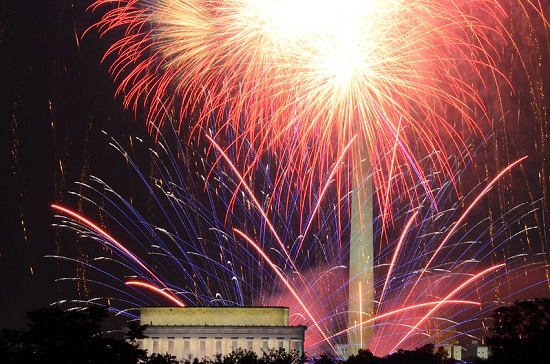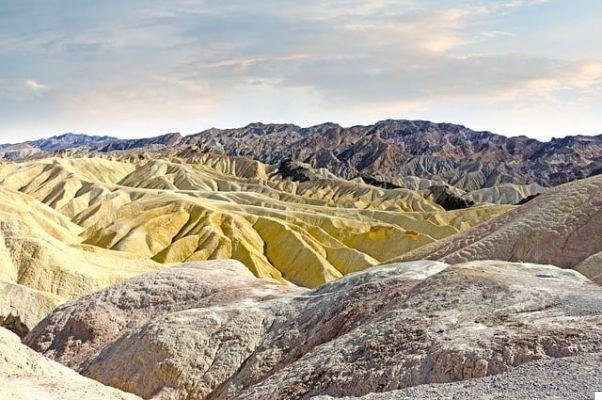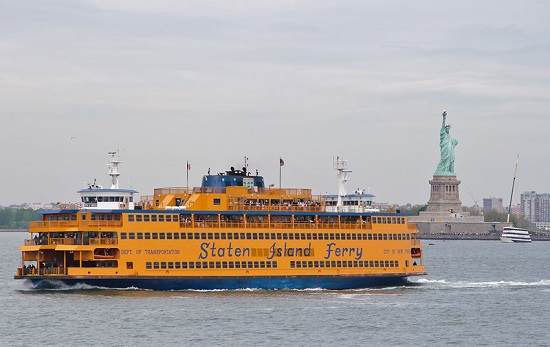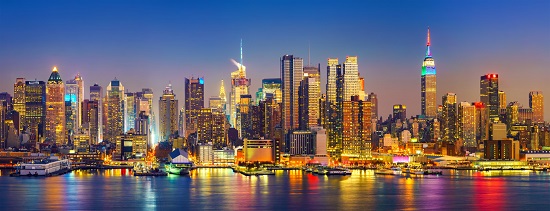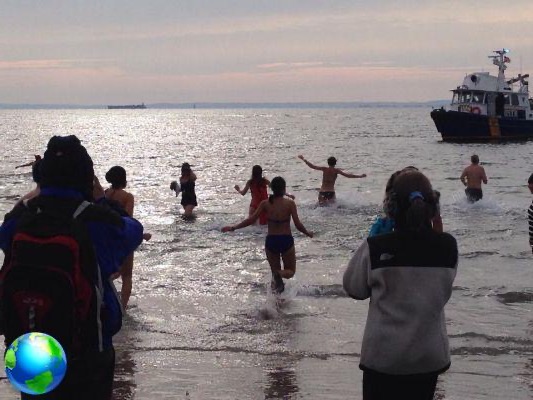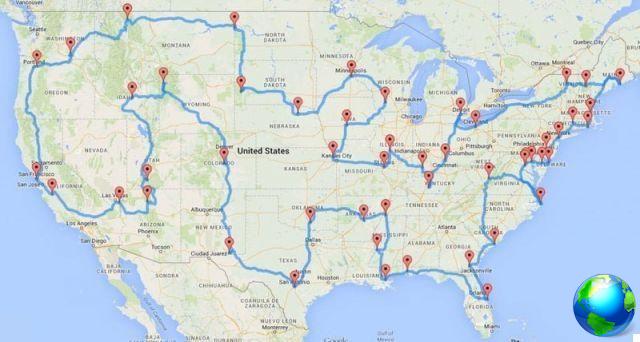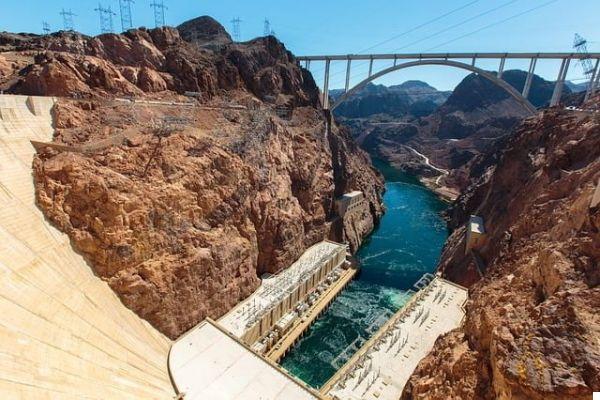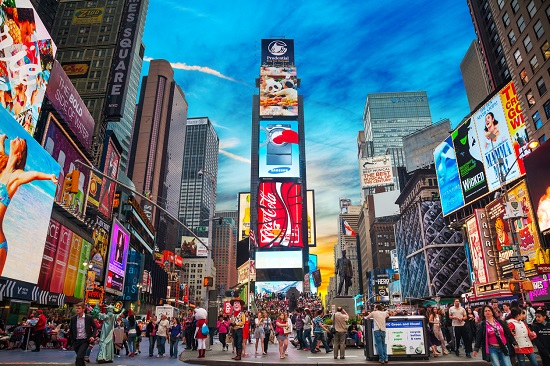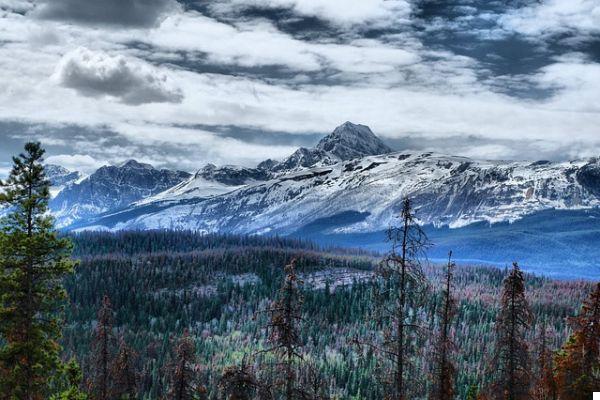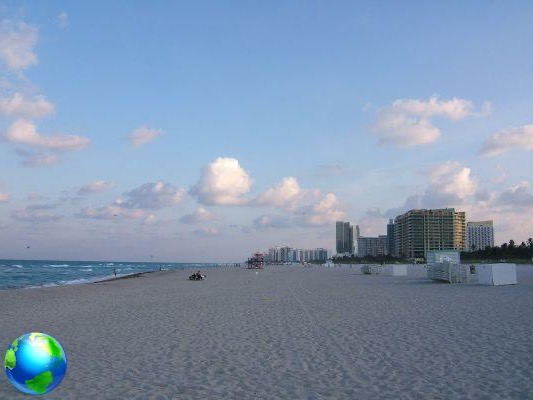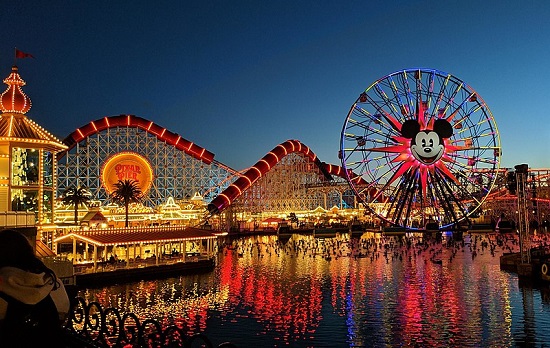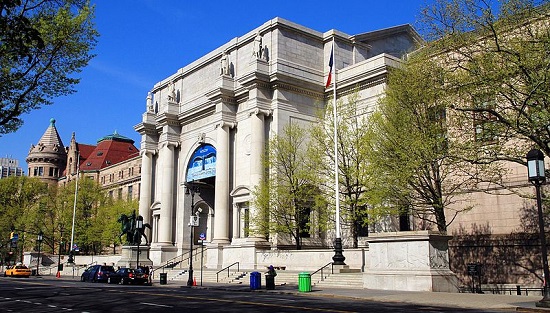California is located on the west coast of North America. It is the largest state in the United States by population, and the third largest by extension after Alaska and Texas. It borders Oregon to the north, the Pacific Ocean to the west (1.350 km), Nevada to the east and Mexico to the south.
Mountain ranges, ridges, small valleys and rivers draw the landscape of California. The coastal ranges, 800 km long, split to make way for San Francisco Bay. The Central valley Stretching from the western coastal ranges to the Sierra Nevada mountains in the east, it is one of the richest and most varied agricultural areas in the country. East of the Central Valley, the Sierra Nevada offers beautiful canyons formed by erosion.
Further south is a belt of deserts, from California to New Mexico. The driest desert is the famous Death Valley. Who has bath water, is the lowest point in the United States (86 m below sea level). Finally, culminating at more than 1.000m above sea level, the Mojave desert, the tallest in the United States.
The Golden State has something of it fun and interesting for everyone: misty redwood forests, seemingly endless roads, beautiful national parks, small villages that look like something out of another time, an exceptionally verdant Central Valley rich in agriculture, the imposing Sierra Nevada mountain range, incredibly fascinating deserts, a myriad of cities world famous and, of course, hundreds of miles of breathtaking coastline. Not for nothing is it one of the most visited states in America.
– Calico Ghost Town
- The ghost towns of the United States to see
Il Southern California is home to popular attractions like Disneyland, Hollywood, and the Malibu beaches that inspired the Baywatch television series. While the Northern California, offers the iconic Golden Gate Bridge, the hills of San Francisco, the vineyards of Napa Valley, and the capital city of Sacramento.
Outside the major cities of California are some of the most important national parks of North America, where it is also possible to ski or snowboard. In the north dominate the ancient and peaceful forests topped by the highest peak in the United States, Mount Whitney.
Major cities of California
Los Angeles - The largest city in the state, and the second largest in the nation. LA is home to Hollywood, Venice, The Getty Center, and Griffith Park.
San Francisco - Golden Gate Bridge, Alcatraz, America's largest Chinatown, cable cars, Victorian houses, the mecca of ethnic culture and sexuality.
San Diego - Beaches, Balboa Park, historic downtown, SeaWorld, San Diego Zoo, and very close to Tijuana in Mexico.
Sacramento - This metropolitan area located between the fertile plains of the Central Valley, between the San Francisco Bay and Sierra Nevada mountains, is home to the state capital and 19th century Old Sacramento historic area.
Bakersfield - The largest city in the southern San Joaquin Valley, a major center for oil and agriculture.
Santa Cruz - A city on the central coast.
Ash - Joaquin Valley Mid-San Urban Center. Gateway to the main national parks of the high mountains of the Sierra Nevada: Yosemite, Sequoia and Kings Canyon.
Palm Springs - A recreational desert with fields, spas, resorts, casinos, and the famous cable car.
San Jose - Near San Francisco, but with a distinct identity, home to the Winchester Mystery House, it is the center of Silicon Valley and home to many tech companies.
Other destinations
- Disneyland - The first Disney park in the world and one of the most important amusement parks.
- Lake Tahoe - A large, beautiful lake great for water sports with excellent ski slopes in the winter.
- Napa Valley - Spas, wine tasting, food and wine tours.
- Big Sur - One of the most scenic spots along the Pacific Coast Highway
National parks
- Channel Islands National Park - Five major islands (Anacapa, Santa Cruz, Santa Rosa, San Miguel, and Santa Barbara) and their marine environment.
- Death Valley National Park - The lowest point in North America. A desert park and brutally hot in the summer.
- Lassen Volcanic National Park - Witness a brief moment of the ancient battle between earth's shapeshifting forces between creation and destruction.
- Sequoia e Kings Canyon National Parks - These twin parks preserve monuments of grandeur, beauty and diversity of nature that are unique in the world.
- Yosemite National Park - One of the first natural parks in the United States.
- Pinnacles National Park - Great rock formations and great hikes.
- Joshua Tree National Park
- Redwood National Park
The climate of California
Due to the vastness of the Californian territory, the climates are very varied. San Francisco it has slight differences in temperature from one season to another and the sun is strong from April to September. Rains are frequent in winter. Beware of the famous fog which surprises many travelers, especially in summer: it can persist all day and give the unpleasant feeling of being in November.
In the mountains, the climate is Continental (very cold winters, hot summers) while the Southern California climate is mediterranean (mild winters, hot and dry summers). The sea temperature, on the other hand, in summer barely reaches 19 ° C in Los Angeles and 16 ° C in San Francisco.
The northeastern part of Los Angeles it is desert; it is best to visit Death Valley in the fall or spring as summer is hot. To avoid sunstroke, drink plenty of water, wear sunglasses, a hat and put on protective cream.
When to visit California
While choosing a route, be sure to inquire about the right time. If you don't care what it's like to drive in the sun as scorching as an oven, avoid the Southern California desert route in mid-July. Yosemite e Lake Tahoe they are to be avoided in winter, when several access roads are closed due to heavy snowfall. The wine country is most beautiful in spring, when the valleys Napa e Sonoma they are in full bloom and the summer crowds have not yet arrived. There Pacific coast highway it is fantastic all year round.
For all of these routes, you will need a car, so fly to the largest city near the places included in your itinerary and rent a vehicle for a week. You will also need a detailed map.
This city holds the sad record of earthquakes. The most dramatic remains that of 1906: the fire unleashed by the earthquake destroyed four-fifths of the city. In 1989, a new earthquake (7,1 on the Richter scale) caused the collapse of the Bay Bridge, but in the end there were few victims thanks to the effectiveness of new anti-seismic standards.





